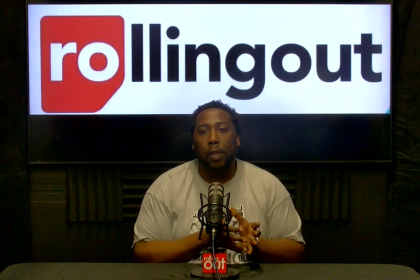The national debate regarding street harassment reached a bit of a crescendo over the past week, following the release of a controversial video from the organization Hollaback! In the video, a hidden camera records a woman being harassed repeatedly for what is alleged to be 10 hours on the street in New York City. The video became a viral sensation, reigniting a conversation that had been ongoing for years — but particularly strong in recent months; following several black feminists launching Twitter hashtags such as #YouOKSis and the killing of Mary Spears, a black Detroit woman who was shot last month by a man after she rebuffed his advances.
But the video has led to criticism from many who believe it only galvanizes a non-issue or vilifies a specific demographic. Men that I have encountered have responded to the entire street harassment conversation with sarcasm (as “SNL” star Michael Che did on Instagram); or with a defensiveness that focuses on the bruised egos of “good guys” who believe they don’t catcall or are always “respectful” when approaching a woman; as indicated by the re-emergence of the infamous #notallmen Twitter hashtag shortly after these recent conversations about street harassment began in earnest.
But instead of derision and derailment of the conversation, here are three approaches that every man who considers himself “not the problem” should try to implement when joining the current dialogue surrounding street harassment.
3. Use the racist subtext of the Hollaback! viral video to amplify the street harassment conversation — not to silence it.
Many have pointed out that the Hollaback! video not only centers white womanhood in the street harassment conversation, but also further demonizes black and Latino males in America while ignoring the regularity of white male harassers. These are all valid criticisms that aren’t just warranted, but necessary; an organization that claims to be committed to ending street harassment can’t be careless about race and class stereotypes that could distort the issue. But detractors are using those factors to derail the conversation entirely. It is possible to address both the dynamics of race and class and how they affect our cultural view of street harassment and address the fundamental gender dynamics that fuel the harassment in the first place. One doesn’t have to supersede the other.
2. Be mindful of where you live before you dismiss the concerns of others.
There is no geographical limit for street harassment. It can happen anywhere there are pedestrians. But in cities like New York, where there are millions of pedestrians and more people are walking everywhere or riding public transit, there is a different level of investment and concern. Urban centers, in general, feature more people walking every day, as opposed to small towns where there are both smaller populations and more people driving — even relatively short distances. You’re not interacting with complete strangers for long periods of time in those environments, so the level of defensiveness isn’t as high. That has to be considered before you disregard this as a “serious issue.” But also recognize the possible dangers women everywhere face as it pertains to being approached by strange men.
1. Hold ourselves and each other accountable.
Women are speaking loudly about this issue and have made it clear that something must change. That “something” is us as men. Women are harassed by strangers in white collar office parks and along sidewalk construction sites. They’re harassed on Wall St. and on 125th St. It’s not about what I or any other man feels is “appropriate” or not–we aren’t the ones affected, so we don’t get to make that determination. Just as a wealthy white NFL owner is in no moral position to dictate to Native Americans what they should or should not find offensive in a team name, men are in no moral position to decide for women what they are to define as harassment. I will likely never have to feel the level of anxiety or defensiveness the average woman walking ten blocks alone in a major city must face; or what a woman walking through a construction worksite must mentally prepare herself for. That’s why we must listen to them as they share their experiences. They are telling us what has to change. Why are we so afraid of changing?

















